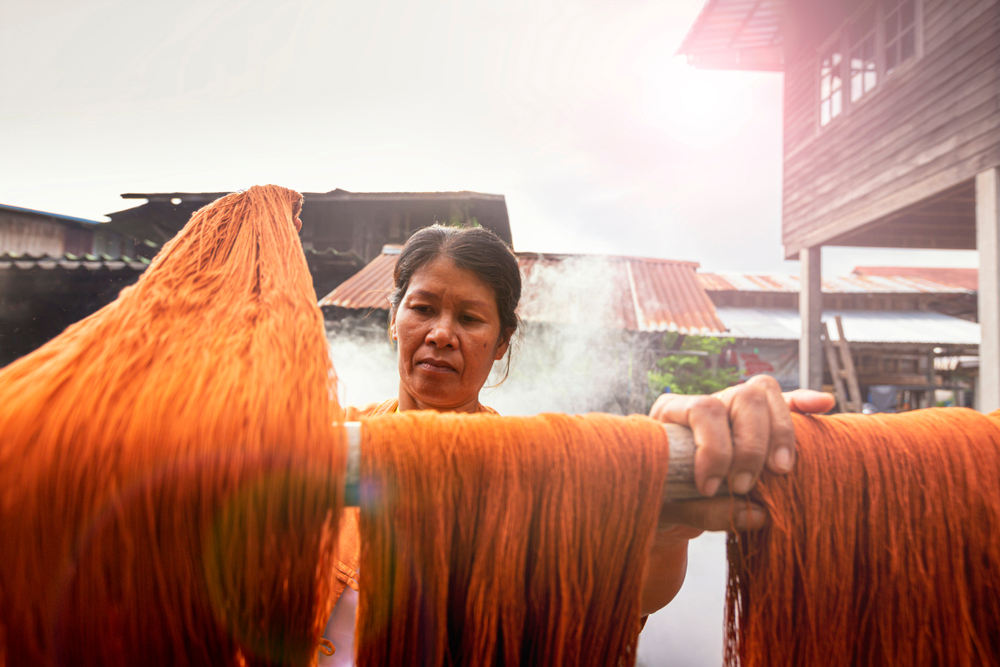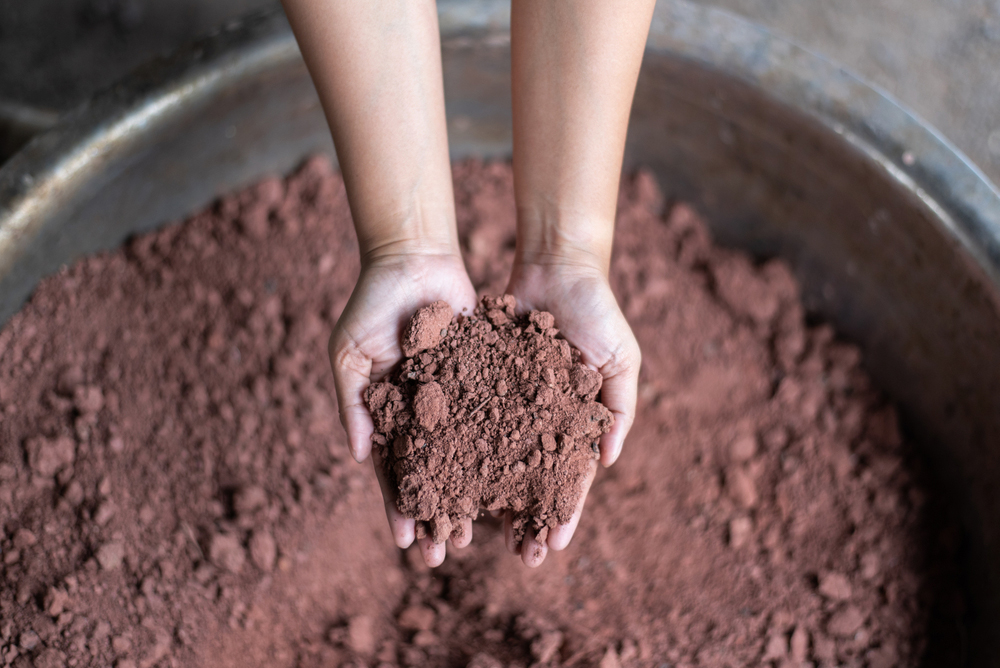Buri Ram’s Woven Fabric: A Charming Identity
Delve into a story of Buri Ram’s woven fabric which reflects a unique and impressive local knowledge. This hand-made fabric is considered to be a piece of art with exquisite details showing local ways of life in a community.

The silk farming and weaving of Buri Ram province have been passing down from generations to generations and they were earnestly supported during the reign of King Rama V. An outstanding characteristic of Buri Ram’s woven silk fabric is a variety of local favorite’s patterns and colors. These patterns are influenced by textile patterns of the following 4 tribes.
1. Thai-Khmer tribe: Hangkarok silk, Amprom silk, Hol silk, Look Kaew silk
2. Kuy tribe: Kra Niaw silk with vertical stripes and black Look Kaew silk dyed with ebony tree fruit. Women often wear a sarong called "sinh' with "hua sinh" (upper pattern) and "tin sinh" (lower pattern).
3. Tai Korat or Tai Berng tribe: Look Kaew silk
4. Tai-Lao tribe: indigo dyed fabric and Ikat silk or Mudmee silk
Nowadays, Buri Ram’s silk fabric has been developed in terms of designs and patterns until it has become notable. Also, a silk fabric with traditional patterns has been adapted to suit modern-day outfits to encourage younger generations to wear and preserve traditional silk. Below are some of a few examples:
- Hangkarok Koo Tin Daeng Silk from Ban Sanuan Nok in Huai Rat District
This is a signature silk fabric of Buri Ram province which is made by combining the patterns of Hangkarok Koo silk with the patterns of "sinh" fabric. The Hangkarok Koo silk is originally known as "An Loon Seem" silk which is a fabric with traditional patterns. The Hangkarok Koo silk is woven by using 2 threads of silk with different colors and it requires skills and expertise of a weaver to produce a very beautiful piece of cloth. For the delicate woven fabric called "sinh", it is commonly worn as sarong by an ethnic group with Laotian ancestors. A distinctive characteristic of "sinh" is having a "hua sinh" (upper part) and a “tin sinh” (lower part) in bright red color with old-style patterns and details. These are the reasons why "sinh tin daeng" or "red sinh" is still popular and widely donned by the local people until now. In order to conserve the valuable knowledge in weaving local-style silk fabric, DASTA has organized a creativity-based tourism activity at Ban Sanuan Nok community for the visitors to learn about the silk weaving process from the first to last step.

- Sinh-Mudmee Tin Daeng Silk from Na Pho District
A unique attribute of Sinh-Mudmee Tin Daeng is that it is woven entirely with silk; however, the "hua sinh" and "tin sinh" will be in red. For some pieces of cloth, a weaver may use a lifting thread technique to create beautiful and intricate patterns on "tin sinh". Currently, "sinh" cloths are made in several new designs, colors, and patterns to meet the different needs of customers. Some of the new patterns that are in demand are the patterns of a “palace gate” and a "stairway to heaven". There is a belief that having these 2 pieces of cloth will lead an owner to the said heaven stairway in the afterlife or will bring good fortune to the owner’s family.

- Phu Akkanee Fabric from Ban Charoen Suk in Chalerm Phra Kiat District
Ban Charoen Suk community is located near Khao Phra Angkhan, one of the six inactive volcanoes of Buri Ram province. As a result, residents of Ban Charoen Suk community have used volcanic soil as part of a cloth dyeing process to produce unique bright colored fabric. Firstly, the volcanic soil will be mixed with water. Then, strain off the sediments before soaking cotton threads in the water for about 4 hours. After that, dye the soaked cotton threads in a mixture of water and Burma padauk bark for long-lasting colors.

The making use of locally found resources in the community and a product value adding has made "Phu Akkanee fabric" become a product with a registered trademark under the Department of Intellectual Property, the Ministry of Commerce. There is an array of products made from Phu Akkanee fabric such as scarfs, shawls, and shirts. Furthermore, Ban Charoen Suk has developed itself to be a cultural-based tourism community. Not only will the visitors get to experience the local ways of life and see the fabric weaving process, but they can also enjoy their time shopping some souvenir fabric back home.
Every single line and pattern of Buri Ram’s silk has reflected not only the precious local knowledge but also the detailed procedures in weaving each thread of silk with meticulous skills and great attention. All of these hard work put into every piece of fabric are meant to create and maintain the artistic beauty and great quality.
Source
ศูนย์ส่งเสริมศิลปาชีพระหว่างประเทศ (องค์การมหาชน)
lrp.ac.th
buriram.mots.go.th



 Share
Share




